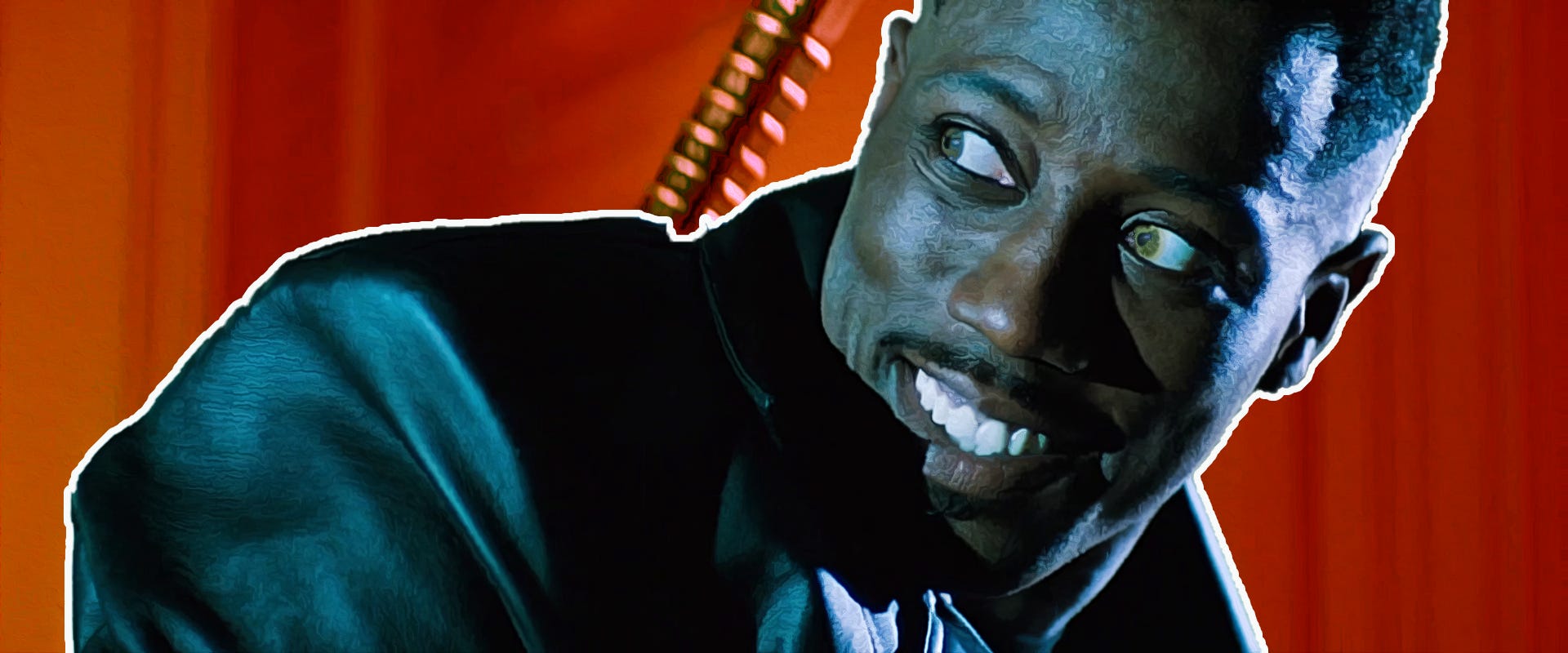25 Years on, ‘Blade’ is Still a Masterclass of Style and Swag
"Some motherfuckers are always trying to ice-skate uphill."
It’s funny to think about how long it took Marvel to figure out how to make an R-rated movie successful (again) during the 2010s, while they've already had one made 18 years before Deadpool. Before the comic book film boom, there was no recipe or path to follow when it came to explicit superheroes, which gave director Stephen Norrington and screenwriter David S. Goyer a much-welcome freedom to go crazy in 1998. Their feature Blade, turning 25 today, was and still is a masterclass of style and swag, dripping with blood and flair, filled with iconic badassery to the brim.
After an unforgettable opening sequence that nested its place into pop culture irrevocably, Blade delivers action-horror nirvana through a slick origin story that flawlessly plants its paper-thin emotional beats into a plot of action. There’s Whistler’s (played by the fatherly yet cool AF Kris Kristofferson) traumatizing memory about the massacre of his family, Frost’s (Stephen Dorff as an unlikely yet mesmerizing villain) hunger for power and becoming the superior species, and naturally, Blade’s (Wesley Snipes riding on a ridiculously energetic charisma) brooding trauma about the loss of his mother and being a half-human half-vampire hybrid. Those might seem insignificant elements during the gory slayings, but they're what actually oil the wheels and provide a smooth transition between the numerous action scenes.
And that brings us to the M.E.A.T: Masculine and Eviscerating Action Time. It’s hard to say anything that hasn’t been already said about the movie’s cool factor and impressive fight choreographies, in fact, Snipes' recurring smile in the film says it all: he had the time of his life playing the Daywalker. He made kids all over the world want to be like him, men wish they were him, and he cemented himself as a striking action hero of the 90s. He reveled in doing his own stunts and channeled a kinetic magnetism that few of his contemporaries possessed at those times.
But to me, first and foremost, Blade has become an all-time favorite because of how it combined horror with style. Norrington embraced gore and splatter by fully making use of the film's R rating and taking scenes of violence to over-the-top and campy extremes. The cruel interrogation scene of the Jabba-like Pearl, the excessive amount of blood at all times, and the comically morphing and exploding vampire heads alongside other premature CGI delicacies are the things that burned into my memory and hugely contributed to my becoming a horror enthusiast. There’s a sense of chicness mixed with raunchy pulp in Blade that’s wildly alluring to this day — it’s suave and dirty, sumptuous yet ordinarily cheap at the same time.
In a subgenre of vampire flicks that it helped define, Norrington and Wesley Snipes’ Blade remains a triumph that, despite a mixed critical reception at the time, found its way to cult status swiftly and with aplomb. Rewatching it now not only feels satisfying but also refreshing due to its singular vision in the sea of by-the-numbers MCU films that saturated the genre in the last ten years.
If you want to support The Screen, the best way to recommend it to someone who’s into pop culture is by sharing posts like this one above.






Great piece, with a lot of salient points. Marvel needs to rediscover the spirit of films like Blade if they ever want to get out of this post-Endgame funk.